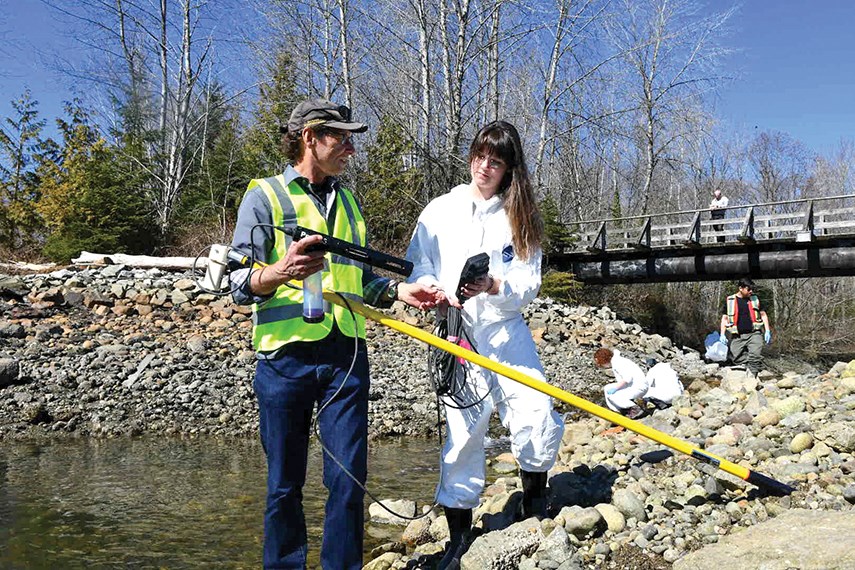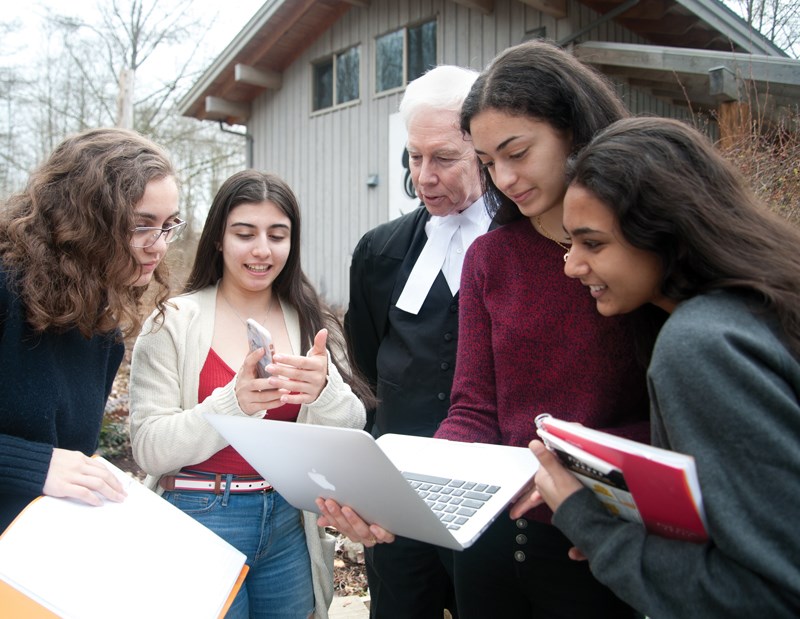The first week of spring break meant, for some high school students, a window into the world of environmental forensic collection and law.
Peter Krahn, a chemical environmental engineer specializing in environmental law and enforcement, hosts an annual course that takes place on Maplewood Flats Conservation Area.
Krahn has written a textbook on his field of work as well as a training course that he used to train government officials around the world on how to do environmental law enforcement, collect legal evidence and take it to court.
Five years ago he was approached by a career counsellor from Argyle Secondary, who asked him if he was able to give a talk to the students or offer a job shadowing opportunity.
He decided instead to take his already existing course and adapt it to students and run the course during spring break every year.
Krahn has been able to receive enough funding to make this course free for participants who decide to apply for it. It is valued at roughly $800 per student, but he has run the course free of charge for the past five years.
Hammera Ausenco contributes a large portion to the cost and the company sent out four scientists and engineers to work alongside the students.

Each scientist or engineer is paired up with four students where they take them through the crime scene, helping the students with sampling techniques and tests.
“I think it’s just a real privilege for the engineers to work with the students,” Krahn said.
The response they have received from the students since the course’s inception has been very positive, according to Krahn.
“In general it’s kind of a life-changing experience for some of them.”
During the five-day course, students head out into the field where Krahn and his team have set up a “crime scene” for them to collect and record evidence.
The students then have time allocated to compile what they have collected and prepare it for presenting it in court on the fifth and final day.
“If you (see them) present their case some of them have transformed into the most veracious environmental prosecutors that you’d ever meet,” Krahn said.
Because they cannot expose the students to actual contaminants, a mock crime scene is set up much like someone would experience it in the real world.
“So they really get to see in-depth how environmental problems are actually solved,” Krahn said.
Cyrus Young is a Grade 10 student at Handsworth Secondary and he wants to pursue engineering when he is done with high school. He said he really enjoyed the course and that it exceeded his expectations.
“I learned a lot from it but it was also (a) very interactive and fun course so it was the best of both worlds,” Young said.
Each student needs to submit an application and attend an interview, much the same as one would experience in the professional world.
Afterwards, the students are given a critique on how they performed in the interview.
“It sounded really interesting and I knew that it involved science and I knew that I’d learn from it so I decided to take it,” Young said.
Each student goes home with a certificate and 35 credit hours that they can put towards their work experience.
“With a lot of students, they’re in a level of high anxiety, with climate change, pollution (and) they don’t know that they can really contribute or do anything about it,” Krahn said.
After taking the course, Krahn said that students are then better equipped to face these types of issues out in the real world.



